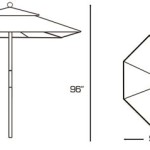How to Add a Patio Roof to an Existing Structure
Adding a roof to your existing patio can transform your outdoor space into a versatile area usable throughout the year. Whether you aim to create a shaded haven for summer gatherings or an all-weather dining space, a patio roof offers protection from elements, enhancing your comfort and enjoyment. While the process may seem daunting, this guide will break down the steps involved, providing a clear roadmap for your patio roof project.
Planning and Preparation
The first step towards a successful patio roof installation is meticulous planning and preparation. Assess your existing patio structure, considering its dimensions, materials, and any potential challenges. Evaluate the roof's desired size and style, ensuring it harmonizes with the overall aesthetic of your home and patio. Once you have a clear vision, it is crucial to obtain necessary permits and consult with local building codes to ensure compliance. Next, gather the required tools and materials, including structural beams, roofing materials, fasteners, and any necessary waterproofing measures.
Structural Support and Framing
Once your plan is in place, you must establish a strong foundation for your patio roof. This typically involves constructing a sturdy framework of beams and posts. The size and material of these components will depend on the roof dimensions, expected snow load, and local building codes. Ensure that the posts are adequately anchored to the ground or existing patio structure for stability. You can utilize concrete footings, metal brackets, or specialized anchoring systems for this purpose.
Next, create a robust framework of beams that will support the roofing material. This typically involves attaching beams to the posts, creating a solid frame for fastening the roof panels. Consider the spacing of beams based on the chosen roofing material and its weight. For example, heavier materials might require closer beam spacing for adequate support.
Roofing Materials and Installation
Choosing the right roofing material is crucial for both the aesthetics and functionality of your patio roof. Various options are available, each offering unique benefits in terms of durability, maintenance, and cost. Consider factors like your budget, desired appearance, and local climate when making your decision. Some popular options include:
- Wood shingles: A traditional, visually appealing choice, offering insulation and longevity.
- Metal roofing: Durable, low-maintenance, and available in various styles and colors.
- Tile roofing: Elegant and long-lasting, but can be expensive.
- Composite roofing: Combining the benefits of both wood and metal, offering durability and aesthetic appeal.
- Polycarbonate panels: Modern, translucent material that allows for natural light, suitable for smaller spaces.
Once you have chosen your roofing material, follow the manufacturer's instructions for installation. This usually involves attaching the panels to the supporting frame, ensuring proper overlap and sealing to prevent leaks. For a more intricate roof design, consulting a professional roofing contractor may be beneficial.
Final Touches and Maintenance
After the roofing is installed, complete any finishing touches necessary for a seamless and functional patio roof. This can include adding gutters and downspouts to manage rainwater, installing light fixtures for evening ambiance, or incorporating ceiling fans for improved ventilation.
Regular maintenance is crucial to ensure your patio roof remains in optimal condition. This includes inspecting the roof for damage, cleaning debris, and repairing any leaks promptly. For wood roofs, consider regular staining or painting to maintain its appearance and protect it from the elements. Metal roofs can be maintained with occasional cleaning and repainting when needed.
Safety Considerations
Safety should be a top priority throughout the construction process. Always work with caution, and wear appropriate safety gear, including gloves, eye protection, and sturdy footwear. Before beginning any work, ensure the stability of the existing patio structure and consider hiring a professional for complex or high-risk aspects of the project.
Additionally, ensure the patio roof meets local building codes and is designed to withstand the expected wind and snow loads.

Design Of A Roof Addition Over An Existing Concrete Patio In Bozeman Mt Part 1

How To Build Patio Roof Off Of Existing Fascia Design And Framing Ideas

How To Attach A Patio Roof An Existing House

How To Attach A Patio Roof An Existing House

How To Attach A Patio Roof An Existing House And 10 Fantastic Ideas

Building A Patio Cover Plans For An Almost Free Standing Roof

Gutters How To Connect Backyard Cover Existing Roof Home Improvement Stack Exchange

Diy Covered Patio P1 Building A Roof To Cover My Concrete Foundation Framing Roofing

Result For Adding A Roof To An Existing Deck Outdoor Pergola Patio Backyard

How To Build A Patio Cover With Corrugated Metal Roof
Related Posts








